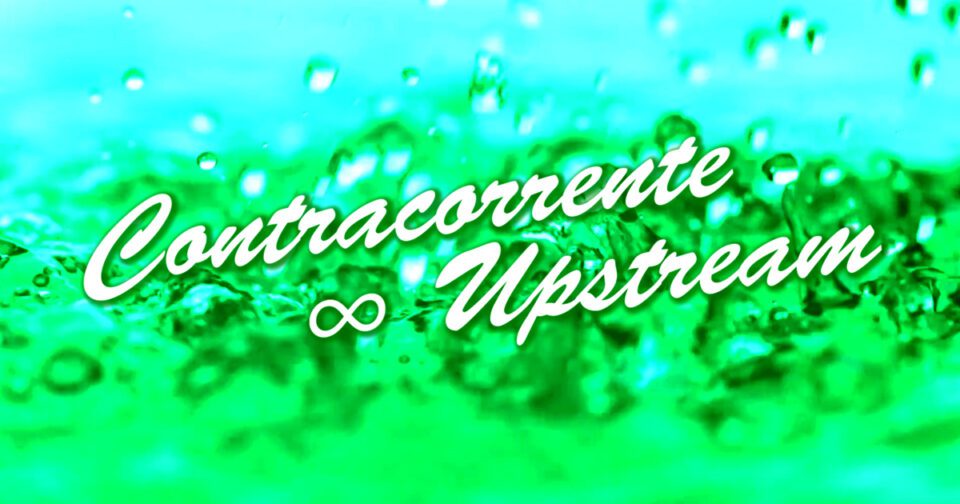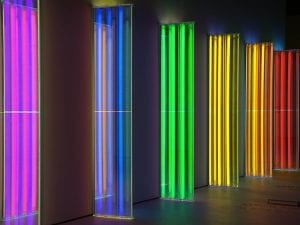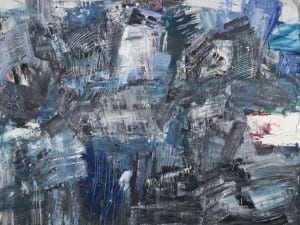UP Projects host the first UK/Brazilian soap opera, screening across two halves of a screen to coincide with this year’s Olympics and responding to current fragmentation across nations. Based upon Herbert Read’s novel, The Green Child (1935), the show will be cast across two time zones, aiming to shadow the current social mood. We talk to artist Leah Lovett and UP Projects about the aims behind the online event and how it ties into the present time of ecological and political uncertainty.
A: As a space to curate, commission and produce contemporary art, what is the central idea behind UP projects?
UPP: We were set up 15 years ago to support artists to create new work in public spaces. We work with care and passion to realise the ideas of artists whilst working collaboratively with others and responding to a range of people and communities. We are dedicated to working with, learning from and supporting artists.
A: How would you define your audience and how do you approach them?
UPP: Because we work outside of traditional gallery space and our work is situated in the public realm, we are able to connect with audiences all over London. Some of our work responds to a very specific audience, a small community or group, while others have a much larger appeal.
Our work could be categorised as contemporary public art or socially engaged practice and so, we do attract both an art audience and those that maybe new to our work. We are continually re-defining what is means to make work in the public realm in order to keep connecting with new audiences.
A: What role does London as the location of UP projects play and how is the city involved in the artistic processes/how is it connected to the artistic processes?
UPP: We are based in London so are interested in exploring our city’s global position, its relationship to the rest of the world and how to live and work within, as well as outside of, a place that throws up both opportunities and challenges for its people. These questions feel increasingly important in the current political climate.
There are more opportunities for artists living and working in London but it is also a really hard place for artists to live, given the cost of rent and studio space. This is something we are exploring at UP Projects, whilst also being committed to working with artists and communities outside of the capital.
A: Could you tell us about your new project, Contracorrente / Upstream?
LL: The project takes the form of a telenovela (a popular Brazilian form of TV melodrama), shot in a day between London and Rio de Janeiro and live streamed to make up two halves of a screen. The story is inspired by Herbert Read’s novel, The Green Child, a 1930s political sci-fi, in which the main character – in our version, a heroine – travels to a fictional town in the borderland between Argentina and Brazil and back again to a fictional village in England before following the Green Child (an alien, or ‘other’) into a green underworld. Each of these journeys is marked by the heroine’s real or imagined death, as a metaphor for a process of political and social awakening, or becoming. It ends when she and the Green Child ossify and become landscape.
We are using this narrative, set against the backdrop of Olympic landscapes via blue screen, to think about national identifications. In particular, I am curious about the identities and differences that become invisibilised through the spatialisation and performance of nationhood and national belonging with mega-events like the Olympic and Paralympic Games – those identities that don’t fit so neatly into binary-gendered and territorially-bounded categories, for whatever reason. This seems to me to be really pertinent to the social and political contexts of both countries at the moment.
A: As a project taking place in two places at the same time but in different times zones, how do you want people to engage with each other LL: It’s a ranging project and of course it’s only possible because there is already a level of engagement. I’ve been working closely with the Argentinian theatre practitioner, Maria Lombardini, to develop the idea. We met back in 2013 whilst I was researching the history of invisible theatre at Augusto Boal’s Centre for the Theatre of the Oppressed (CTO) in Rio de Janeiro, which is where Maria lives. She is an experienced TO workshop leader, a multi-linguist and, now I know, a really insightful and generous collaborator. Although a previous project, Contra Band (2014), took place in a similar way between Rio de Janeiro and London, this process is more involved. So this is really the first time for both of us working closely in this way, and that is throwing up some interesting challenges.
There’s the obvious issue of time difference, with Rio de Janeiro being 4 hours behind London (though even saying this, I’m aware that the division of time in this way is a British colonial construct). In practical terms, with 3 performers in each city, this has a knock on effect on when we can all rehearse. Then there are the technical irruptions – the latency of the network for instance, the delay between shooting and streaming the video – which have the potential to pull the performers out of their shared telematic space. This is something we are playing with now, so I don’t really have the answers yet!
Perhaps the most interesting thing for me, though, has been negotiating the linguistic and cultural gaps in meaning, the different ways meaning is made. It took us (myself and Maria) a long time to settle on the title, as we really wanted there to be an equivalent resonance in both languages. We’re trying to do something similar with the script – not using two languages, but a kind of hybrid. So to address your question again, but from the perspective of the audience, perhaps it is not only about the connecting of these two places, but also about embracing partial understandings and gaps in meanings – which are always present, but which we aren’t always aware of and maybe don’t think about enough.
A: How do you think your artwork moves within contemporary culture, especially with so much social and political fragmentation happening across countries?
LL: My immediate response to this question is to ask whose contemporary culture? This project uses the telenovela form, which is a massive part of Brazilian popular culture, but not so much here in the UK. When I was learning Portuguese in Rio de Janeiro in 2010, my language teacher set us screen time as homework with the explanation that, “Brazilians love telenovelas!” That was my first exposure to this somewhat addictive and (to my eyes) completely overblown form of TV drama. What struck me immediately was how different it was from the British soap opera (in our house, it was always Eastenders). Both of them seemed to convey certain national stereotypes: the cliché of the fiery Latina vs. the cliché of the miserable Brit. After that, I read about the history of telenovelas, and how they came to be used by the Brazilian military regime to create national cohesion across this vast country with relatively high levels of illiteracy.
So with this project, I am interested in how television has been used to create culture, and whether it is possible to be critical of it with the use of new telematic technologies. These technologies allow for a certain cutting across, or connecting of social and political contexts, which are themselves very much in flux, but they also disrupt that connection. As to the capacities of art to move contemporary culture, society and politics – an idea which seems to be implicit within this question – I’m undecided! I don’t think it’s possible to make any grand claims for the project, especially not at this stage. My hope is that Contracorrente/Upstream might reveal the fragmentations you describe, and trouble attempts to smooth over them by reasserting old nationalisms. One of the ways we’re trying to do this is by collaborating with performers who aren’t recognised as citizens of the nation-states in which they live and work, and by communicating across languages.
A: How was Herbert Read’s novel The Green Child in particular an influence for the artists?
LL: In a sense, Herbert Read’s novel was the solution to a problem. The form of the telenovela was the initial influence. In keeping with that form, I wanted to find a novel that might resonate and give space to some of the issues I’ve been discussing here. I had first read the The Green Child in a bit of a sleepless fog, during a period of maternity leave, which only made the story stranger. I love early sci-fi anyway, but remember thinking it seemed really ahead of its time. Of course, in other ways it’s very much of its time – in how South America is imagined, for instance – so we have had to rethink some aspects of the narrative. Mainly, though, I settled on this novel because of the connection it makes between these particular nations, and the way it expresses and frustrates a desire for political and social reconciliation.
A: Why did you pick these particular locations in both cities? LL: Casa 24 was an incredible partner for Contra Band in 2014. It’s an artist-run space in Santa Theresa, an old colonial district in the Southern district of Rio de Janeiro best known by tourists for its yellow trams. The director is Filipe Espindola, a performance-maker, body artist and fearless activist. Just before our performance, he is running a course around transgender rights and experience, and he is engaged in the spatial politics around the Olympic development in Rio de Janeiro.
It made sense to me to offer up this project in some ways to help support that other work, and also to build on our working relationship. Meanwhile, in London, being located in the Queen Elizabeth Olympic Park helps to contextualise that relationship. I think of it as a kind of reimagining of a space out of joint. With the blue screen set up, of course, these particular locations won’t always be visible to online audiences. As a third location, the online, telematic space articulates the distance between the two halves of the live performance, even as it connects them together.
A: How do both countries’ current social moods play a role in the project and how are they connected? LL: In some, very dark ways, the histories of our current political contexts are profoundly connected. In 2014, the publication of in Brazil of the Truth Commission report revealed the extent of Britain’s involvement in the violent military dictatorship of 1964-85. The British trained the Brazilian military on psychological methods of torture which had been developed in the context of Northern Ireland. That report was initially commissioned by Dilma Rousseff, the socialist president of Brazil who was herself tortured at the hands of the military regime and who has since been impeached on charges of corruption. Some observers have suggested these two events are not only coincidental.
In the UK, of course, the shock referendum result (to some of us, not least the politicians heading up the campaign) in favour of Brexit has revealed deep divisions. These divisions are the result of inequalities exacerbated, if not solely created, by neoliberal globalisation and its capital flows. In both countries, and indeed elsewhere, there seems to be a return of a regressive right, the popularity of which perhaps comes out of a desire to reverse these accelerated social changes. This is where nationalisms can come into play – from a desire to return to the sovereign state, to disengage from the ‘out there’, the ‘other’ in some ways. It’s a dangerous and actually divisive move, as the rise in racist hate crime in the UK context, and abolition of progressive, pro-women, indigenous rights and anti-racist governmental departments in Brazil both show. Like many people, I find it overwhelming, and it’s difficult to know where to begin, or how to respond, but these are some of the political events and ideas informing the project.
For more information and to watch the live streaming, tune in Saturday 30 July 6pm, 7pm and 8pm www.upprojects.com
Follow us on Facebook, Twitter and Instagram for the latest in contemporary art and culture.




